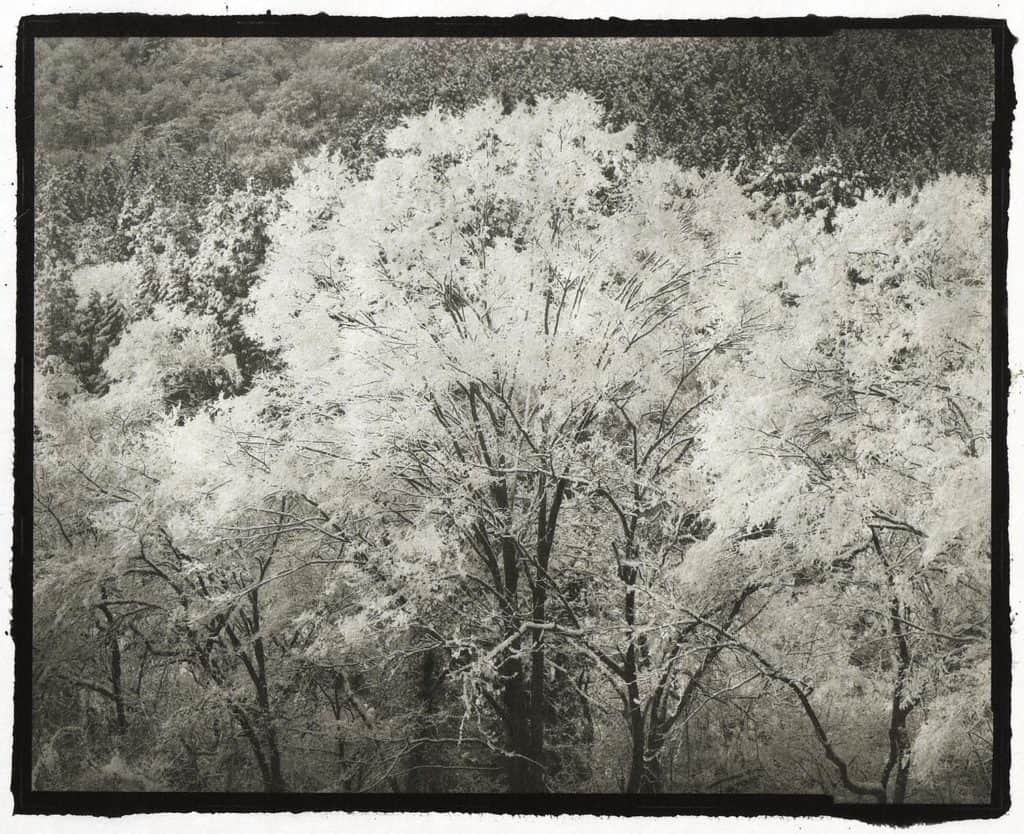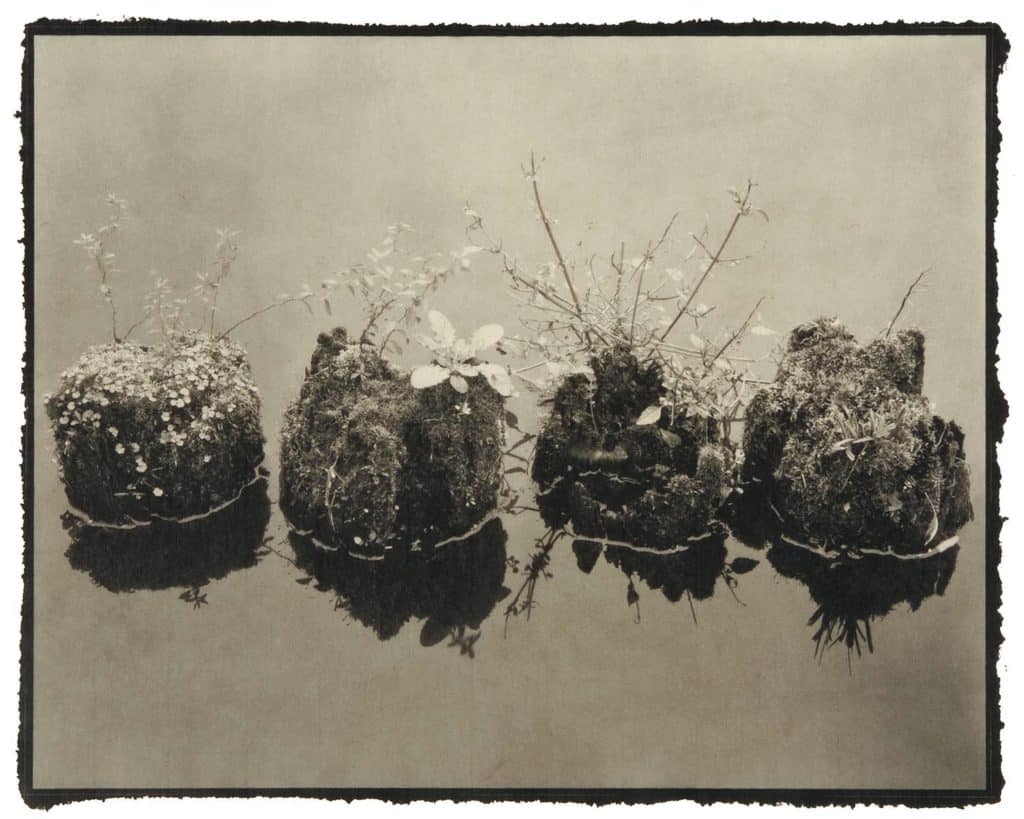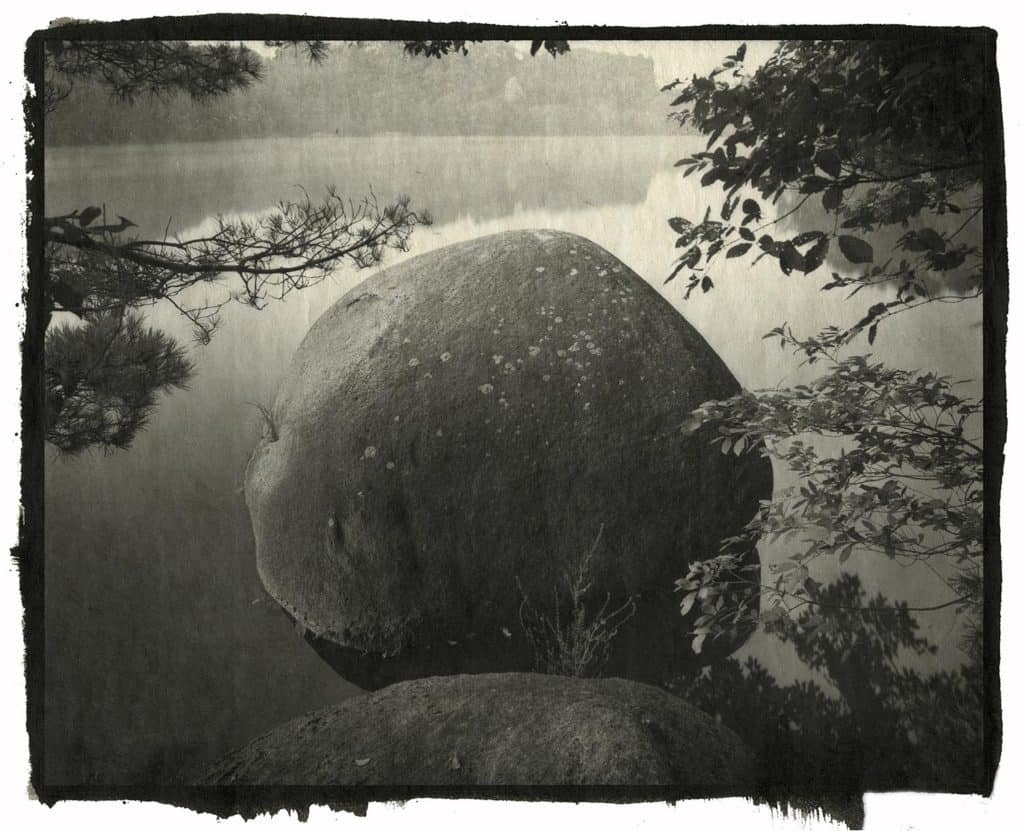
When I create my photographic works, I print them on Washi paper (traditional Japanese paper) using the Platinum Palladium printing technique, which has a unique texture and tone. My work’s theme is primarily “Myriad of Gods;” I am creating portraits of these “gods” as I find them in nature. These teachings come from “Shintoism,” the indigenous faith of the Japanese, which is a way of life and thinking that has been an integral part of Japanese culture since ancient times. This teaching believes “gods” dwell in all things and the importance of enjoying nature as the embodiment of these “gods.” Thus, the Japanese worshipped every natural phenomenon as God / Kami and lived with fear and respect for them.
I chose this teaching for the theme of my work because this outlook on nature is thought to be a clue, perhaps, of solutions to the world’s problems. There are many problems in the world – territory, energy, and the issue of food. We must have a position of “worshipping nature” because that may build a more stable world. This theme fits well with me as an artist and a Japanese individual.
And now, I will introduce my concept of the works afresh.
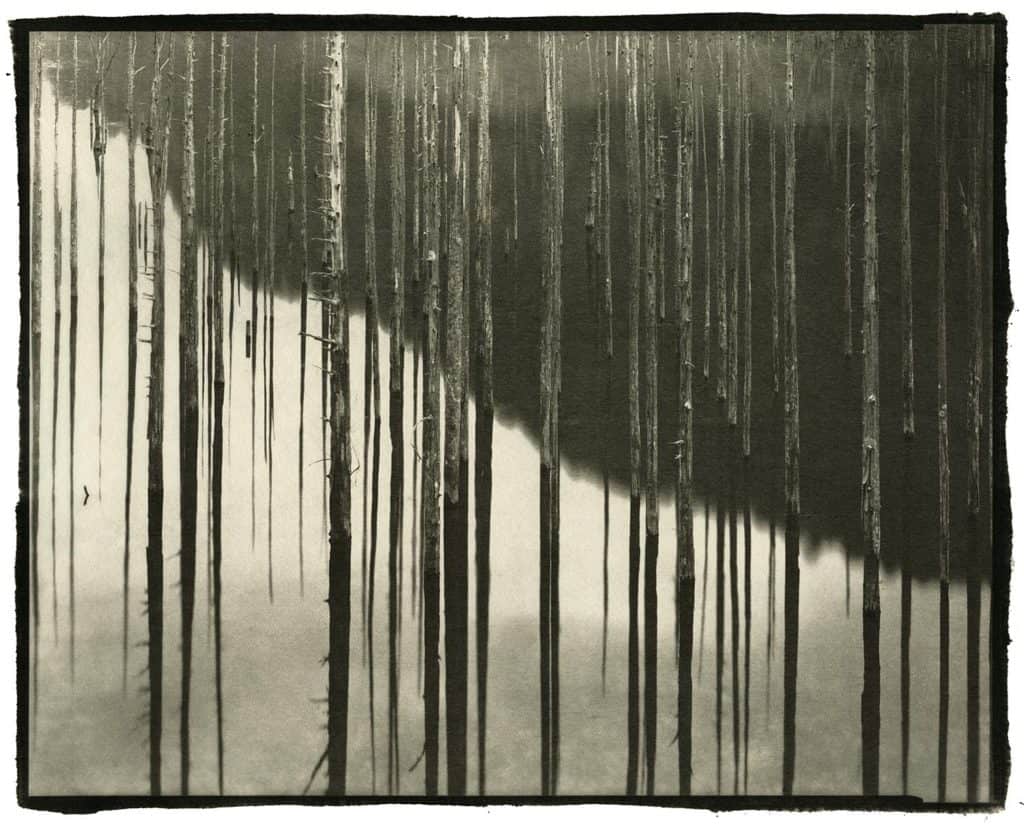
Since ancient times, the Japanese have built their core values and culture around loving, respecting, and coexisting with nature. However, after the period of postwar economic growth, I feel that Japan’s unique natural belief that gods dwell in all things has been lost. Environmental destruction, which has been regarded as a problem in recent years, is precisely the loss of awe and gratitude for nature that has been taken for granted. Water is the source of life, and modern society is now completely oblivious to the custom that gods dwell not only in the mountains but also in rocks and trees.
Where has the sense of coexisting with nature gone? Shouldn’t Japanese society know that nature allows humans to live, and humans always need to respect and appreciate nature as they sustain it? Where have the value and aesthetics of Japanese people gone, often represented by ‘gracefulness’?
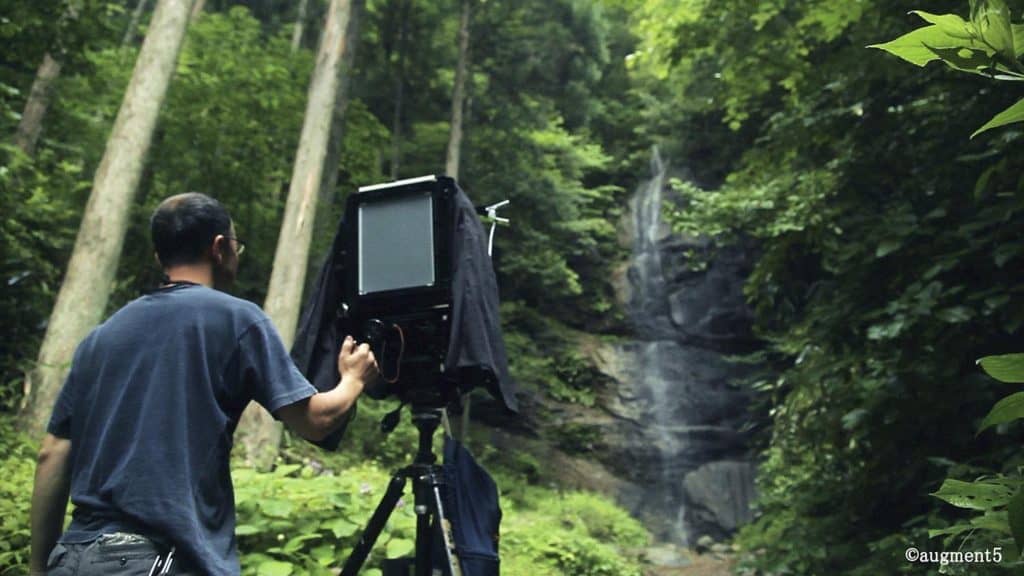
Nowadays, the world is urged to find ways to achieve economic growth and protect the environment. The perspectives of nature rooted in Japan may provide a vital clue. My work has been created by embracing such thoughts and always respecting nature.
When I take pictures, I feel gods in nature. The landscapes reborn in my artwork remained untouched since antiquity, even as nature has been suffering from destruction in the present age. Our ancestors may have seen the same landscape and discovered gods in the very same place. Thinking this way, I feel the magnificence of time flowing in that place and even a sense of intimacy. That is why I continue to capture them through my lens. Nature should be preserved and passed on to future generations, not just to the people of the present age.

For my printing, I use platinum, the most stable earth metal, and I print on Hosokawa paper, which has been produced and manufactured in the same way for over 1300 years. Neither platinum nor Japanese Washi paper change over time due to its intrinsic nature, so my work will survive a thousand years. It is the act of my handing over the scenery that our ancestors saw to people a thousand years later.
After all, the combination of the platinum technique and Washi paper is stunningly beautiful. The gradation of light and shade that can only be expressed with platinum is comparable to that the human eye catches. The sense of depth and three-dimensionality gained with this combination is incredible. These are enabled by the harmony with the support paper having texture on the surface and rich gradation.
The pairing of Washi paper and platinum arrived after many struggles, and this combination is the best expression material for me. This combination gives the gods the respect they deserve in print.
However, it is most desirable that nature remains, not the artwork alone. But who knows if that will happen. Therefore, I create my artwork. I hope that the world a thousand years from now will have a more abundant nature than what we have now. I want people a thousand years later to look at the same objects and be more pleased than I am. With such an earnest wish, I continue to produce my work.
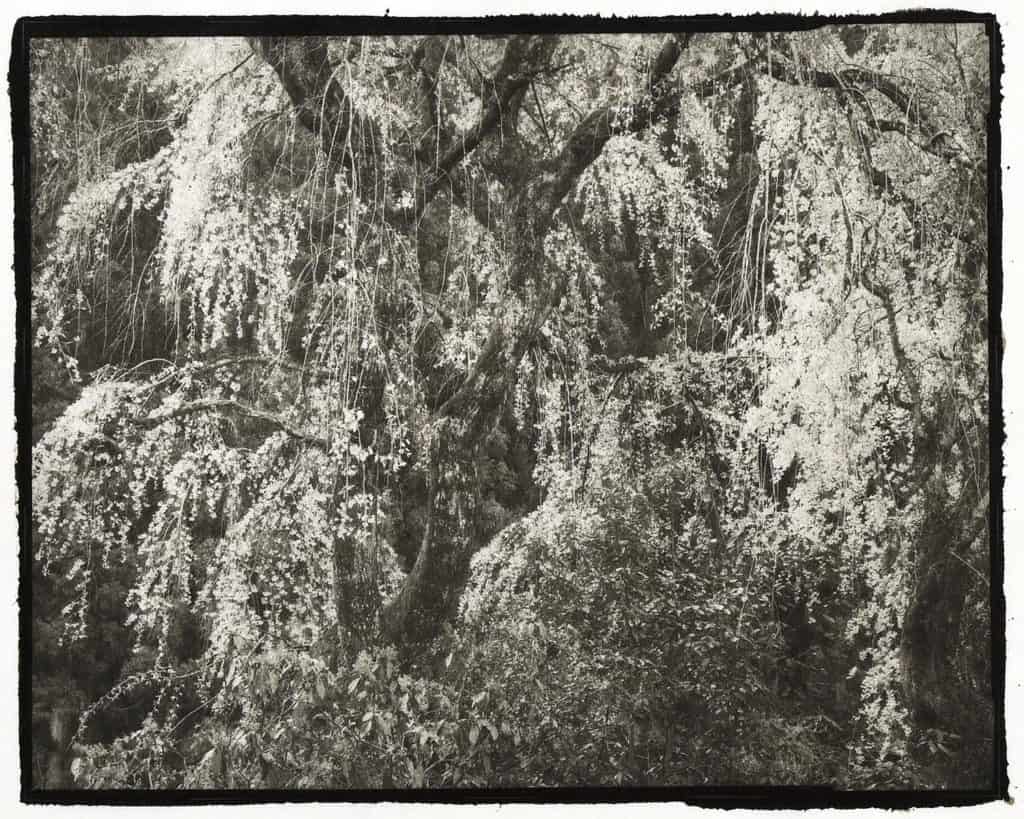
Then comes the question of what I should do to create my work with this overarching concept. In the early days, I was worried about this. While reducing the burden of nature, what kind of materials should I choose to create my work, which is premised on the idea of “passing it to the next generations.” What I thought at first was to use this platinum printing technique, the most stable metal on the earth. The second thought was to use Washi paper, made of all-natural materials which has demonstrated that it does not deteriorate for a very long time. With this all in mind, I read some old documents, learned from an experienced person, visited a craftsman, and established a method for myself at last. In that way, it has formed my style for now.
Platinum is the most elegant and stable print technique, and Washi, known as a Japanese identity and does not deteriorate, makes a miraculous fusion.
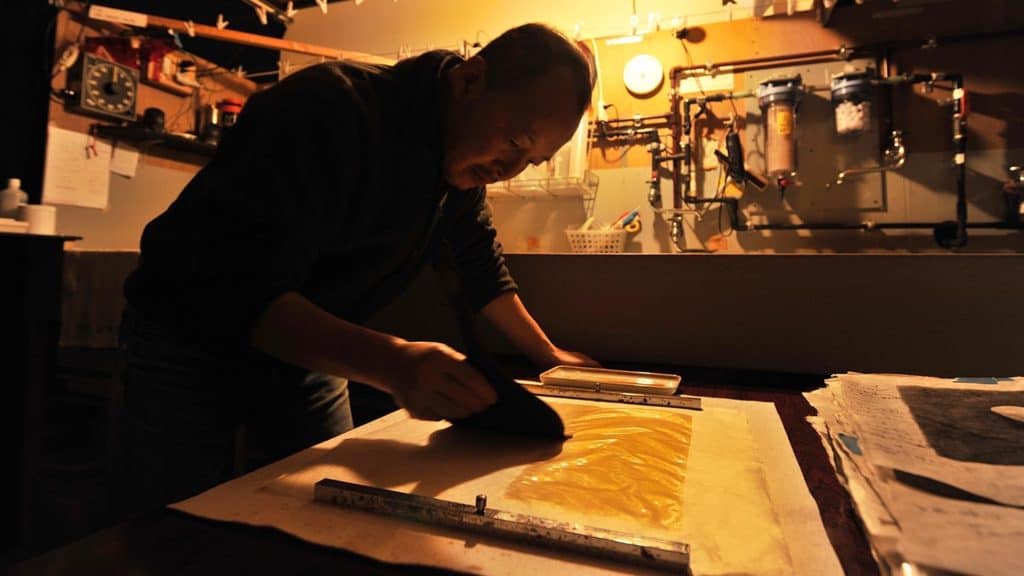
These were far beyond my imagination and brought a unique presence to the graceful world as I see it. Furthermore, because of its long lifespan, I feel it is best for me as I make these noble “portraits of gods” for future generations.
Now that the concepts behind my work are better understood, I wish to speak about my process in the field. I usually carry a studio-type camera of the 8×10 format on my shoulder while journeying through the fields and mountains. I pair this camera with five interchangeable lenses (150mm, 240mm, 360mm, 450mm, 610mm), film holders for almost three photographs, and my tripod.
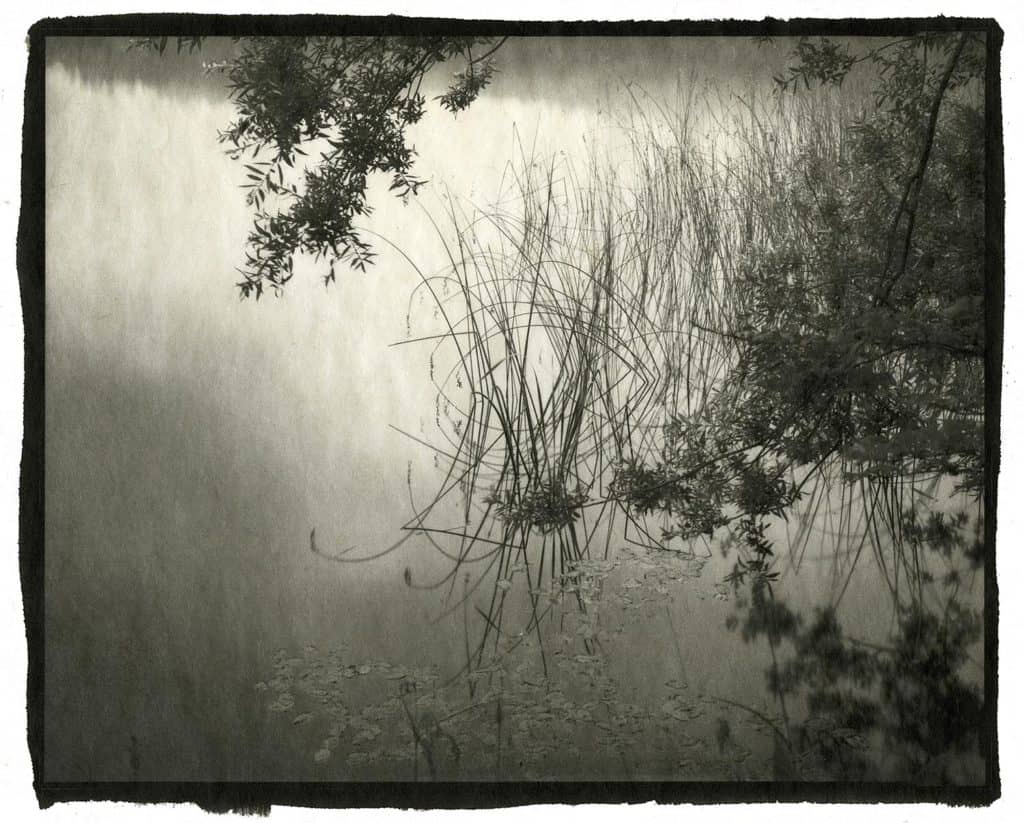
Why do I choose to use the 8×10 format rather than a lighter, digital format? I discerned the former to be the maximum format that allows me to move about freely while along in the forest while allowing me to rid of distortion in the image whenever possible. Because I am taking portraits of these natural gods, I want them to look their best, and I hope to make the photographs as neat as possible. Further, the time to put on the blackout curtain (or dark cloth) and to operate the camera to gain the proper perspective is a very important time in which I confront the subject properly. At first, I may approach the subject slowly and decide on the proper composition. The extra time before pressing the shutter also allows me the important moments when I may speak with the gods before me.
And there is also the courtesy when I enter nature, which I hope to convey. If I did not have this courtesy, it would be very rude to these natural gods. Trees in the forest communicate by their roots through the mycelium networks of mushrooms. If I am rude in nature, my rudeness immediately spreads through the forest. It is like the synapse of the human nerve system; the mountain’s trees exchange information and nourishment through the contact of their roots.
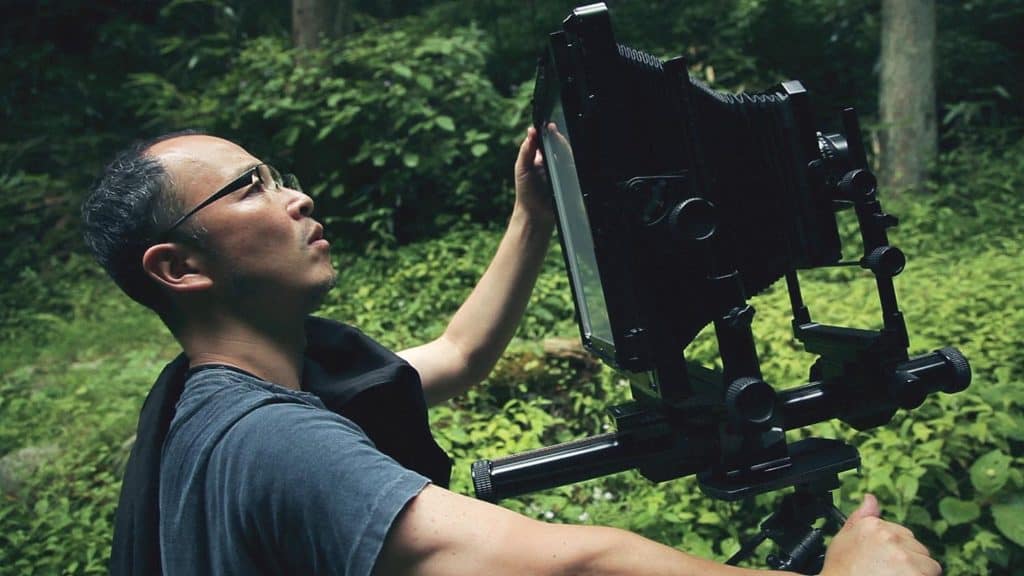
It is said that the trees communicate through the mycelium that spreads underground in a wide area. Therefore, I first quiet my heart and begin to step forward calmly when I enter the mountains.
It is important to be accepted by nature because I wish to feel a part of it. A wonderful feeling it is to arrive at such a lovely place and meet with the divine, the god of the one and only, and walk among these natural beings. When their presence graces me, I bow deeply and begin my dance with the camera after giving them thanks. If a mountain and the trees dislike me, I cannot come across the thing I wish to encounter, and I may pass by it without ever noticing what I wish to notice. Therefore I behave humbly as possible while being excited nevertheless, always keeping in mind that I appreciate everything when I photograph. Of course, I do not forget to convey my thanks and gratitude to the natural gods around me after creating my photographs.
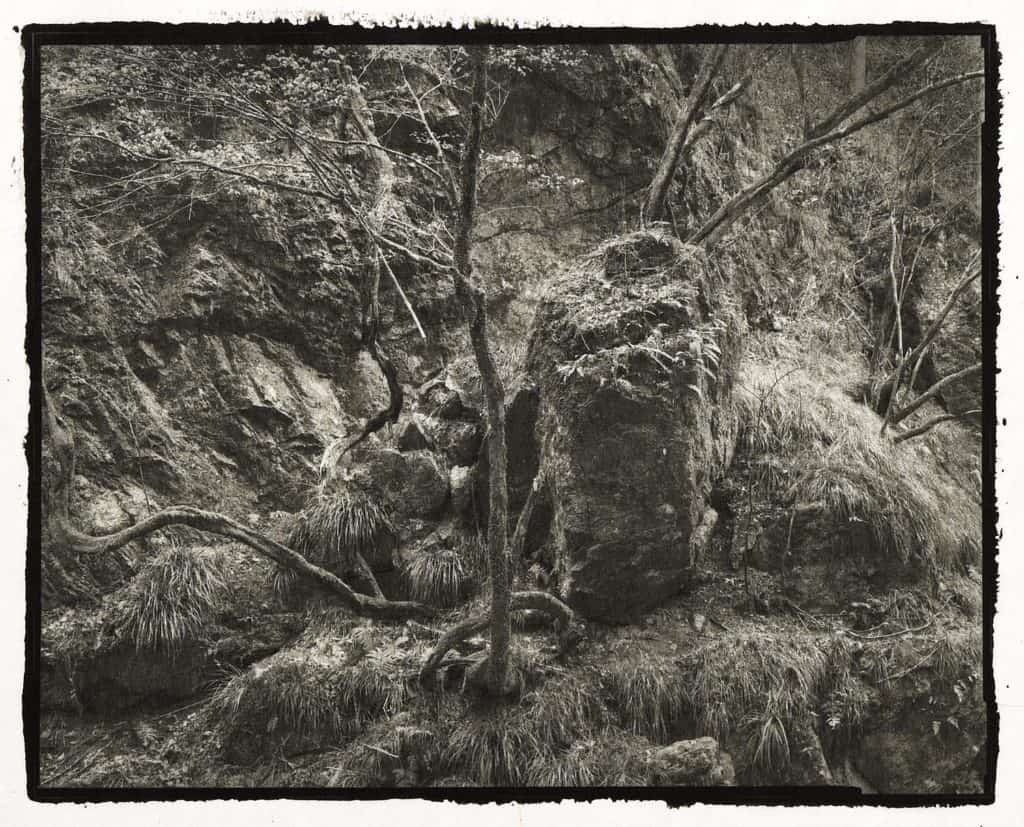
Traveling by car, I can keep myself much calmer, going in whatever direction pulls me. I only decide where to start venturing when I leave the house, and I only get out of the car at a place that calls to me, which I find interesting. For this reason, I brace myself and often put out an “antenna” until I catch “something” affecting my heart. I whet my senses and focus heavily to feel a wispy sign, and I hope not to miss the moment when my heart points out an uproar by some natural god(s) around me. I hope to face each situation sincerely so that the gods who called me do not feel any sense of rudeness or lack of humility. In that way, I often come across the situation asking, while stepping in their direction, “You called me, right?”
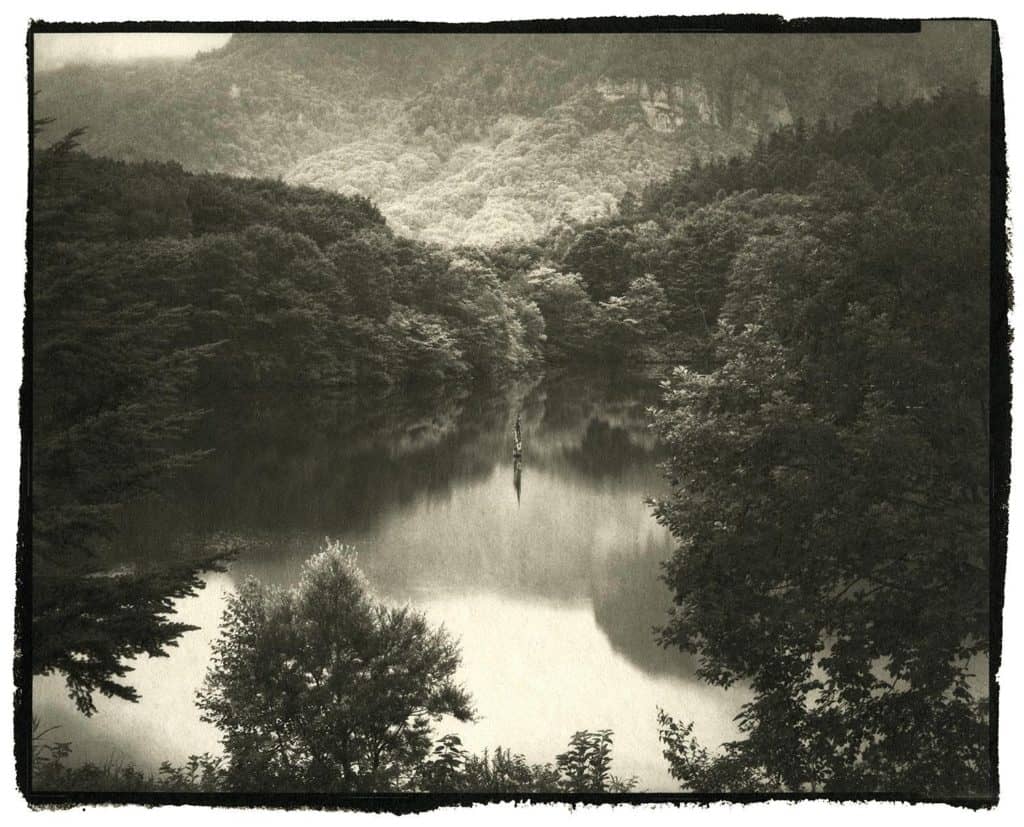
My love for nature and my desire to worship it ties into the idea that humans are tiny when entering the natural world’s grandiosity. And when I photograph this nature, it is not a statement of “I photograph you,” but rather the more modest “I beg to photograph you.” And that’s important, as I keep repeating, “you must remain humble” to face this nature modestly and create a good symbiosis between nature and humanity.
With my printing, I am beginning to play more to find a solution to my evolving expression. One way to do this is to produce a larger print by “joining” divided small prints of each part of the image together. Joining is required due to the difficulty of making a platinum print of such a large size. Theoretically, I can make large works without limit by dividing the negative and connecting each part of the prints I made from each one. When I connect these prints, I do not cut the paper with a blade; instead, I tear off the overlap by hand, as the fibers that come out by this method help connect the pieces more naturally, providing a lattice appearance. The joint of this grillwork feels more of a Japanese style and directs a wonderful perspective sensation.
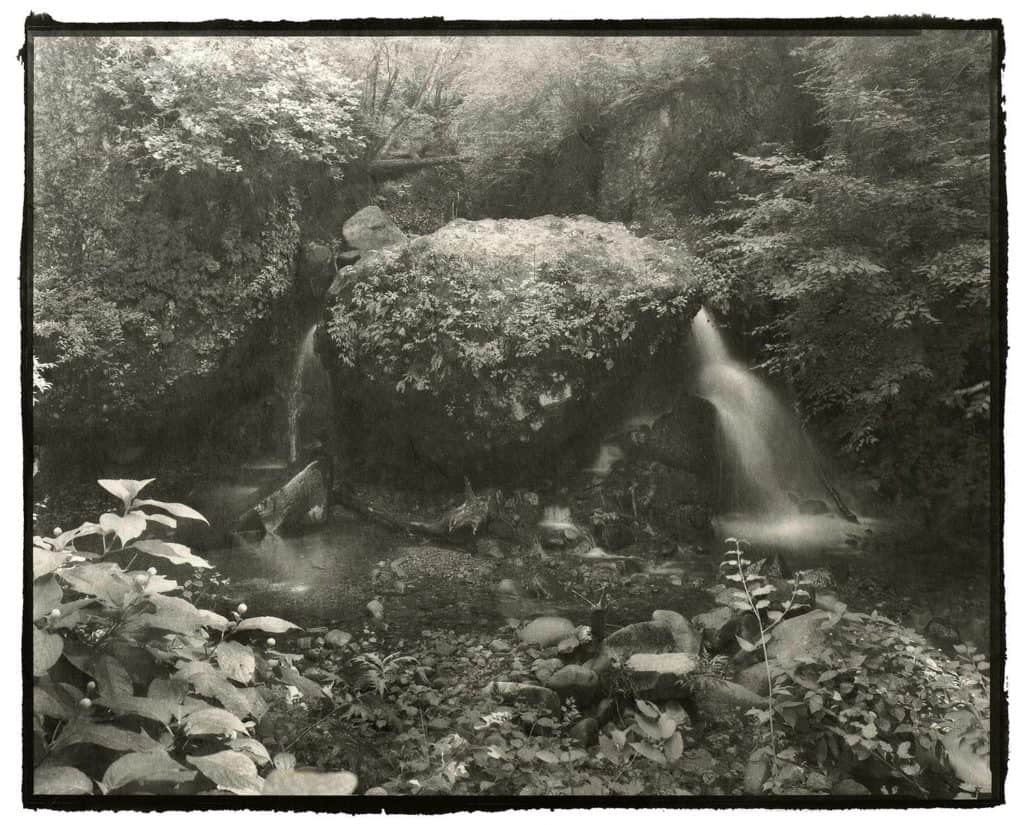
In this way, the creation that began with only one initial thought is steadily nearing completion as unique works by trial and error over a long period. It is beautiful and exceptional; the works are supported by a deep concept, solid thought, and solid philosophy. That’s why I think this shows a proper sense of existence, even though it is sometimes consumed without much consideration in the present age.
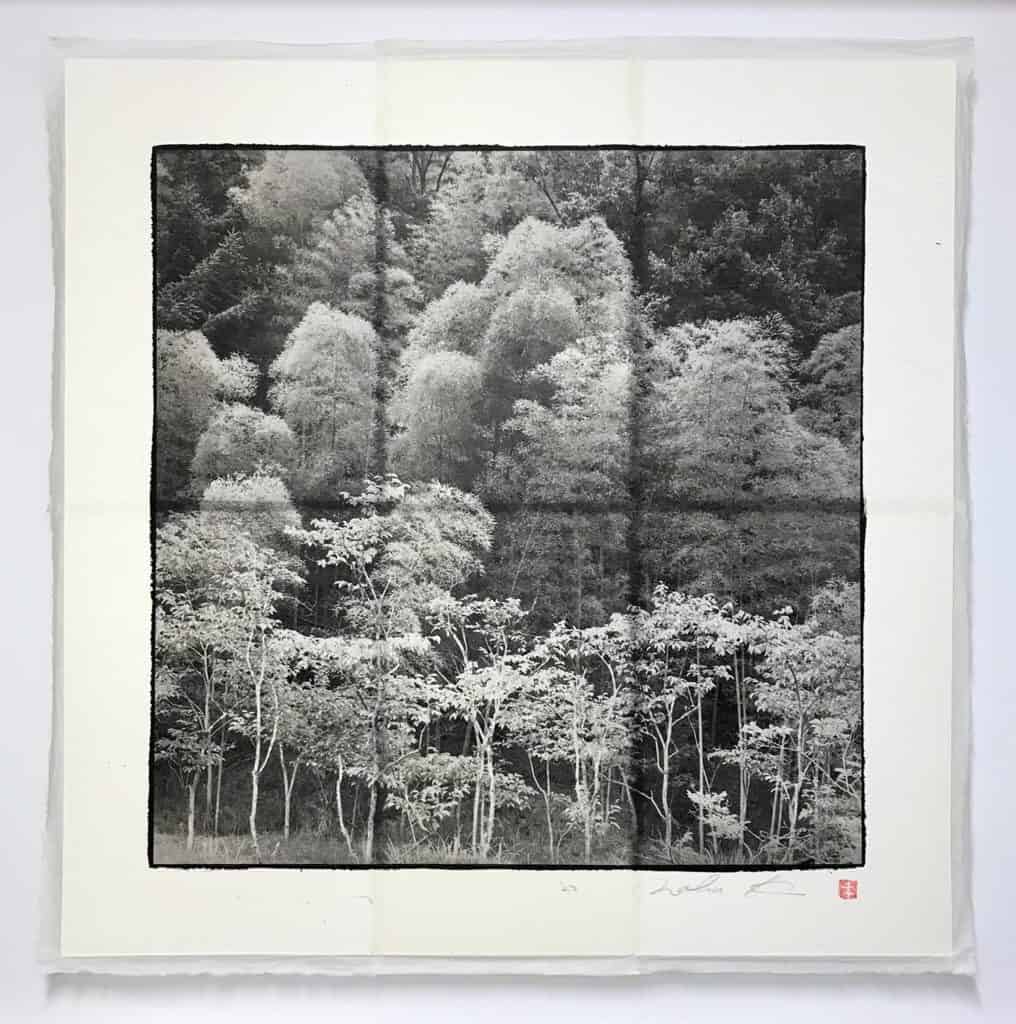
I want the moment to be provided, only going back and forth with these two things in a solidified balance. Therefore, the selection of materials demanded the highest level of preparation, and the rule I imposed on myself was necessary. In other words, fully show your sensibility while creating work that others sympathize with. Material, equipment, sensibility, courtesy, technique, and thought; the best work is completed only after all conditions are met.
